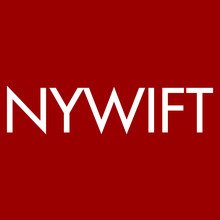Birds and Freedom Come Together as we Celebrate Black History Month
/Harriet Tubman is one of the truly great American heroes. She made 13 trips back to Maryland between 1850 and 1860 to guide people to freedom. Her knowledge of astronomy and native flora and fauna played a significant role in her efforts. She even used bird calls to help guide her charges, eventually helping some 70 people, including her parents and four brothers, escape slavery.
At the Harriet Tubman Underground Railroad State Park in Church Creek, Maryland, Ranger Angela Crenshaw called Tubman “the ultimate outdoors woman.” “We know that she used the call of an owl to alert refugees and her freedom seekers that it was OK, or not OK, to come out of hiding and continue their journey,” Crenshaw says. “It would have been the Barred Owl, or as it is sometimes called, a ‘hoot-owl.’”
The rich baritone hooting of the Barred Owl, primarily active at night, is a characteristic sound in southern swamps, where members of a pair often will call back and forth to each other. Tubman mastered the hoot of the Barred Owl, using it as a signal throughout the Underground Railroad to let freedom seekers know she had arrived. She knew to use it at night when it would blend in with other nighttime sounds. But, those seeking liberation knew it was Tubman. And when they heard it, it was an important signal on a journey to freedom.
Former U.S. poet laureate Robert Hayden’s poem Runagate, Runagate mentions Tubman and also the owls she mimicked with such accuracy.
Hoot-owl calling in the ghosted air,
Five times calling to the hants in the air,
Shadow of a face in the scary leaves,
Shadow of a voice in the talking leaves.
Broadway Stages encourages you to learn more about this incredible woman. You can click here for more information about Harriet Tubman and here for more about the Barred Owl (and hear the call Tubman mimicked).
Finally, if you are looking for a way to begin birding or a veteran birder, the NYC Audubon and Outdoor Afro will host a birding event at Shirley Chisholm State Park on February 11 from 10 to 11:30 a.m. Explore the largest state park in New York City, home to diverse wildlife and habitats, including hawks, waterfowl, wetlands, and many tree and native grass species. The group will meet at the Penn Side Entrance of Shirley Chisholm State Park (1750 Pennsylvania Ave). The event is free but registration is encouraged.




